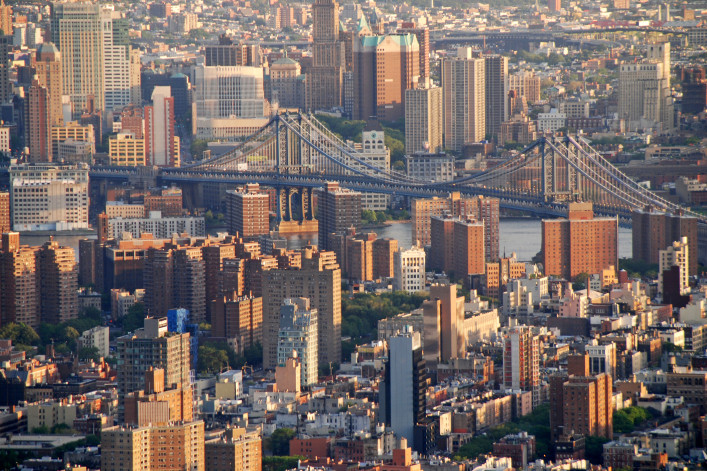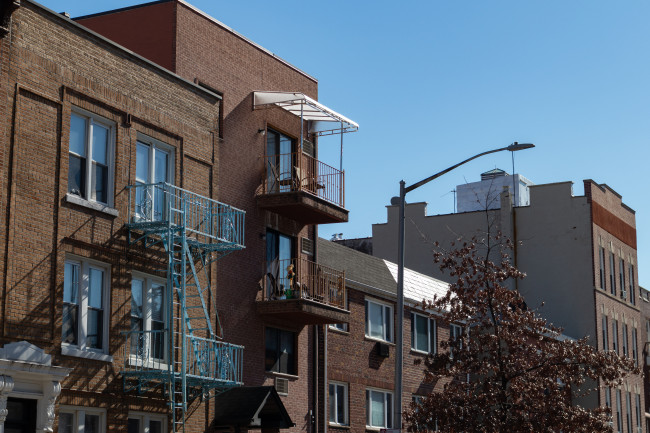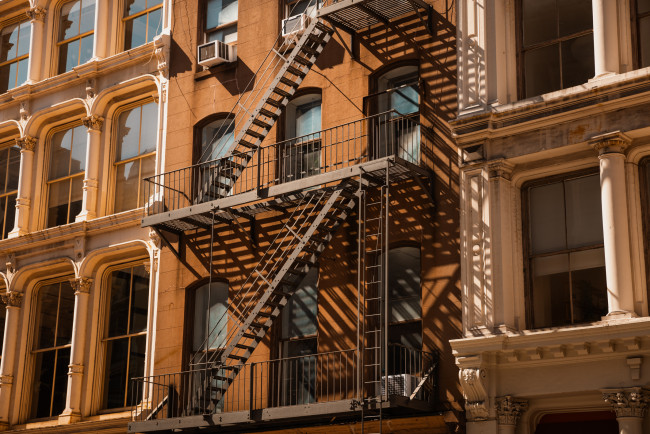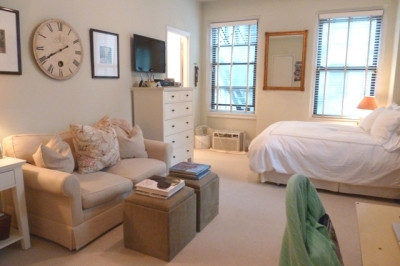The insider's guide to rent-stabilized apartments: Essential knowledge for New York renters
- The Rent Guidelines Board votes on stabilized rent increases in June each year
- The board voted in favor of a rent increase of 2.75 percent for one-year leases

Rent increases are limited and renewals are automatic for renters of rent-stabilized apartments.
iStock
Landing a rent-stabilized apartment in New York City can be a lifeline for renters who would otherwise struggle to afford the city’s high rents.
Unlike market-rate units, annual rent increases for rent-stabilized apartments have a much tighter cap. (The Good Cause eviction law now protects some market-rate tenants from large rent hikes.) That means that landlords with rent-stabilized units are limited to rent increases of a few percentage points at renewal time. And in most cases, stabilized tenants are entitled to automatic renewals.
This year, the Rent Guidelines Board approved an increase of 2.75 percent for one-year leases and 5.25 percent for two-year leases that begin on or after Oct. 1st of 2024.
The rent-stabilization program is one of the city’s initiatives aimed at preserving affordable housing. In 2019, protections for tenants in rent-stabilized apartments were increased under the Housing Stability and Tenant Protection Act, making it more difficult for landlords to take affordable apartments out of the program.
So how do you find one of these coveted apartments? Just under 1 million NYC apartments are rent stabilized, which is about 41 percent of the city’s total number of rental apartments. These apartments are snapped up quickly by renters who tend to stay put. But you can find one—if you know where to look.
If you want to land a rent-stabilized apartment or merely hang onto one, it's useful to know the ins and outs of the program and your rights as a tenant.
[Editor's note: A previous version of this article was published in July. We are presenting it again as part of our winter Best of Brick week.]
1) How to find a rent stabilized apartment
You can start your search through the Division of Housing and Community Renewal to find a list of buildings with rent-stabilized apartments in a certain neighborhood. This list won't show you available apartments, but you can look at specific addresses on apartment listing websites to see if apartments are available.
While there are some important exceptions, most rent-stabilized apartments are located in buildings with six or more units, that were built before July 1st, 1974, and that were not “substantially rehabilitated.” However, not all apartments in these buildings are necessarily rent stabilized.
Sometimes developers of new rental buildings receive tax breaks in exchange for including a certain number of rent-stabilized units. You can check online whether an address has received a J-51 or 421a tax abatement—a sign a building has stabilized apartments.
You can also do a general search on apartment listings sites like StreetEasy, renthop, and openigloo, where you can find some rent-stabilized apartments if you add “rent stabilized” to the keyword search field.
Another route to a rent-stabilized apartment is through NYC Housing Connect, otherwise known as New York’s affordable housing lottery. These apartments are in brand-new buildings, often with amenities like outdoor space, gyms, and even pools.
To qualify for these apartments, you need to meet specific income requirements, which differ for each property. The building may still be under construction when you apply, and the process can take a long time. Most successful applicants apply multiple times to many different buildings and only secure an apartment after years of persistence.
Do you make between $85,372 - $218,010 a year? You could qualify for middle-income rent-stabilized housing at 2-20 Malt Drive on the Long Island City waterfront. Apply now, before the lottery closes on December 30th, 2024.
2) How do I know if my NYC apartment is rent stabilized?
If you suspect your building is rent-stabilized, you can look up your address in DHCR’s database to check its status (or by checking the nonprofit JustFix’s building lookup tool).
Aside from investigating the status of the building, you’ll want to make sure your landlord is charging you the legal rent. To find out, you can request your rent history directly from DHCR by email or postal mail, or use JustFix’s website which will request it for you.
Your rent history will show you every time the landlord has increased the rent and why, if your apartment is stabilized. But FYI: there are a myriad of ways an unscrupulous landlord might have tried to illegally remove an apartment from rent stabilization, so you might need to do some digging.
The HSTPA made it easier to challenge the status of your apartment. So, if you signed a market-rate lease but think your apartment should be stabilized, there’s a better chance of successfully proving the apartment was illegally deregulated. If that’s the case you may successfully have your rent rolled back.
Landlords are supposed to include a rent-stabilization rider in all new leases and renewals informing tenants of their legal rights. In practice, landlords don't always tell prospective renters about the status of the apartment—and newcomers may not ask.
But you may want to avoid asking the landlord about the status of the apartment, said tenant attorney Sam Himmelstein, a former partner at Himmelstein, McConnell, Gribben, & Joseph, now retired. If you’re asking the landlord about rent stabilization, Himmelstein said it’s possible they may be concerned about your ability to afford the apartment, or they might assume that you will challenge the rent once you obtain the apartment. If they can, they might rent to someone else.
3) How are rent-stabilized apartments maintained?
In the past, landlords could raise the rent in return for renovations to the point where apartments could be taken out of the program, though this practice was outlawed by the HSTPA. But landlords say one unintended consequence of the 2019 law is that apartments can fall into disrepair, given the caps on how much an owner can raise the rent for building and apartment upgrades.
Many stabilized apartments are in older buildings, and landlords have been known to skimp on repairs for renters who aren’t paying market-rate, or even to sabotage their own buildings to force stabilized tenants out. But evictions are more difficult under the new laws and it is possible to get a rent-stabilized apartment in a brand-new building through the affordable housing lottery, known as NYC Housing Connect.
Separately, hundreds of buildings across the city are rent stabilized because their owners received a J-51 property tax abatement, a tax break for owners that significantly rehabilitate a property or convert a building into housing from another use.
Keep in mind, though, that tax abatements eventually expire—usually after 10 to 35 years—at which point the apartments’ rent-stabilized status also expires. However, if the landlord hasn’t followed guidelines for alerting tenants about deregulation, you are entitled to stay put and your apartment continues to be stabilized. Apartments can also be retroactively stabilized if a landlord illegally raises rents to deregulate the units, as was the case for Stuyvesant Town and Peter Cooper Village in 2009.
The Rent Guidelines Board has information on whether a building that receives a tax abatement will eventually lose coverage.
4) How much can rent increase in stabilized apartments in NYC?
Annual rent increases are set by the Rent Guidelines Board, a group of nine mayoral appointees, that meets every June to vote on hikes for one- and two-year leases. Before the vote, tenants and owners can make their case for a rent freeze or rent hikes through a series of public meetings and hearings.
This year, the RGB approved increases of 2.75 percent for one-year leases starting between Oct. 1st, 2024 and Sept. 30th, 2025. It also approved hikes of 5.25 percent on two-year leases during the same period. The percentage increases were slightly lower than the decade-high hikes in 2022.
It’s possible your rent could also rise as a result of Major Capital Improvements (MCI)—upgrades to the building like replacing the boilers, plumbing, or roof—or an Individual Apartment Improvement (IAI).
Rent increases in exchange for MCI renovations are capped at 2 percent per year, though prior to the 2019 changes to the rent laws landlords could raise rents by 6 or 15 percent. An owner must apply to DHCR to get an MCI approved and a tenant can challenge an MCI application.
IAIs most commonly take place when a unit is vacant, though they can happen while you are residing there if your landlord gets your written permission. Landlords can raise the rent in exchange for up to $30,000 of improvements over 15 years in most cases, though landlords of long-vacant apartments or units with long-term tenants have higher caps, under the 2024 budget. Previously, the most a landlord could spend on an IAI was $15,000.
Affordable rent is undoubtedly a life-changing benefit for tenants, but rent-stabilized apartments aren’t always cheaper than their market-rate counterparts. Landlords sometimes charge a “preferential rent” that is lower than what’s technically allowed, because the legal rent would be too steep for the neighborhood. This is particularly prevalent in less expensive parts of the city.
In the past, a preferential rent might be offered to a tenant, only for the rent to be hiked when the initial lease expired. Thanks to the HSTPA, tenants who are offered preferential rent will keep it for their entire tenancy.
5) Are rent stabilized apartments based on income?
Most affordable housing programs in the city—such as Mitchell-Lama co-ops and Section 8 vouchers—come with income restrictions for residents. But getting a rent-stabilized apartment has nothing to do with the amount of money you earn, unless you are applying to a housing lottery. (Of course, a landlord will still want to verify that you make enough to pay the rent).
“It has everything to do with the apartment and nothing to do with the tenant,” said landlord Arik Lifshitz, CEO of DSA Property Group, a firm that rents out a mix of rent-stabilized and market-rate apartments.
If you win an apartment through the lottery after meeting the income requirements and eventually earn more than the limit, you won't lose the apartment. In these situations your rent will be stabilized regardless of how your income changes during your tenancy, though before 2019, a tenant who earned more than $200,000 could have their apartment deregulated under certain circumstances.
6) What are the benefits of a rent-stabilized lease?
A crucial feature of rent stabilization is the security it gives tenants, since landlords are required to renew leases every year and there are only certain circumstances where you can be booted from your apartment. Of course, to get that sense of security, you need to understand your rights.
“People think when the lease expires they can be brought into court and evicted, and that’s just not the case,” Himmelstein said.
Between 90 and 150 days before your lease expires, your landlord should offer you a renewal or, if there’s a valid reason not to renew—such as a family member of the owner plans to move in—they need to provide you with a notice of non-renewal.
If you don’t get either, you’re still covered by all the protections of rent stabilization and, in fact, your landlord can’t raise your rent until the lease is renewed (or hike it retroactively), so in some ways it’s a benefit to renters not to get an official lease renewal, Himmelstein said. That said, if you want the document, you can file a complaint with DHCR.
There are instances in which a landlord can evict you. If you’re breaking the terms of your lease—such as not paying your rent—you make yourself vulnerable to getting kicked out. In most cases, though, a housing court judge will give you a chance to “cure” (fix) the problem before ruling to evict you. If a court determines that an apartment is not your primary residence however, you won’t be given the chance to fix it.
The changes to the rent laws have made it more difficult for you to be evicted even if the landlord wants to have a family member move in. In the past, a landlord could recover as many apartments as they liked for owner use. Now they are limited to one apartment per building and must prove an immediate and compelling reason to do so.
“That is a much harder burden to meet,” Himmelstein said.
In addition, to evict a tenant who has been renting for 15 years or more, who is 62 years old or older, or who is disabled, a landlord would need to relocate that person to an equivalent rent-stabilized apartment in the same area. Tenants can also sue for fraud if they give up the apartment and the landlord’s family member doesn’t actually use the apartment.
You may have to leave if the landlord plans to demolish the building—but that might not be entirely bad news, some stabilized tenants have negotiated lucrative buyouts in such situations.
7) Who can you add to the lease? Who can take over the apartment?
Landlords are only required to add a spouse to your rent-stabilized lease, provided they live with you. (That rule includes same-sex marriages, according to DHCR).
“Not a live-in lover, not a partner, not a domestic partner, just a spouse,” Himmelstein said.
However, if you leave the apartment, you can hand it over to a family member who’s been living with you as their primary residence for at least two years (or one year if your family member is 62 or older, or disabled). This process is called succession and it also applies to Mitchell Lama apartments.
A person eligible for succession can be a parent, child, grandparent, grandchild, sibling, or a person with whom you have a close financial and emotional relationship, such as a partner who shares your bank account or other legal and financial connections.
8) You can be evicted if it is not your primary residence
One way a landlord can kick out tenants is by proving that their apartment is not the tenant’s primary residence.
If a landlord suspects you live elsewhere, he can take you to court to try to convince a judge that you don’t actually live in the apartment and evict you. Your bank statements, credit card records, flight records, and more all create an electronic footprint showing whether you have been physically present in NYC. Being physically present in the apartment for at least 183 days of the year is a crucial factor used by the courts in determining whether an apartment is a tenant’s primary residence.
If your paperwork supports your claim that the apartment continues to be your primary residence, courts will tend to look favorably on you if a landlord pursues a non-primary residence claim, so long as you also meet the physical presence requirement.
“Since the passage of the Housing Stability and Tenant Protection Act of 2019, which abolished vacancy destabilization, landlords generally don’t have the financial incentive to pursue these cases,” Himmelstein said.
9) You should not overcharge your roommates
While you can share your apartment with a roommate, you must split the rent evenly—half for two people, in thirds for three people, and so on—even if a roommate has a bigger room or other perks.
Rent-stabilized tenants must charge roommates by evenly dividing the total rent by the number of tenants.
Earlier versions of this article contained reporting and writing by Leigh Kamping-Carder, Alanna Schubach, and Emily Myers.



























